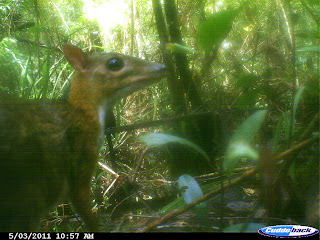 |
| Mouse deer |
 |
| Mouse deer |
Get updates from rainforest, job opps, ways to acts and more with our monthly(ish) action letter.
"(Required)" indicates required fields
20 YEARS OF GIBBON RESEARCH
Ever wondered what 20 years of gibbon-watching can teach us? Since 2005, we’ve been gathering one of the world’s longest continuous datasets on wild gibbon
Read more
Meet the Orangutans of Sebangau
Every orangutan is just as unique. For a Critically Endangered species like the Bornean orangutan, every individual counts. And each of those individuals has a
Read more
Baby Orangutans: A New Hope
Earlier this week we shared the exciting news that three new baby orangutans have been born close to one of our camps in the last
Read more
Good News: Gracia Has Given Birth
This morning the Orangutan team search for the whereabouts of Gracia, an orangutan in her 40s. In our previous article it was reported that Gracia
Read more
A New Generation of Critically Endangered Orangutans
Gracia is a 40-year-old wild female orangutan who lives in the Sebangau National Park. She is a familiar face to many of BNF’s researchers, but
Read more
A Close Encounter with Gara
As the year draws to a close, the rainy season begins in Indonesia. For several months, the pounding rain becomes a near-constant backing track, and
Read more
Halloween: Meet Borneo’s Creepiest Wildlife!
Halloween 2022: Borneo’s Creepiest Wildlife! It’s Halloween! To celebrate, let’s usher in the spooky season by getting to know a few of Borneo’s creepiest jungle
Read more
ORANGUTANS AND THEIR INTELLIGENCE
Orangutan is an exotic primate that always attracts the world’s attention. The species was first described scientifically in 1758 by Carl Linnaeus. They are the
Read more
Introducing the 5 wild cats of Kalimantan
As you might have read over the last few weeks, Borneo is home to five species of wild cat: the bay cat, Sundra clouded leopard,
Read more
The Month of Love: Getting Reacquainted with Gracia and Gara
February 14th is marked by annual celebrations around the world as people gather their loved ones and exchange gifts to commemorate Valentine’s Day. This year,
Read more
Captivated by Charismatic Red Monkey
DISCOVER MORE ABOUT ONE OF BORNEO’S MOST CHARMING, YET UNDERAPPRECIATED, PRIMATES It was early morning and temperatures were low at the Peat Forest Natural Laboratory
Read more